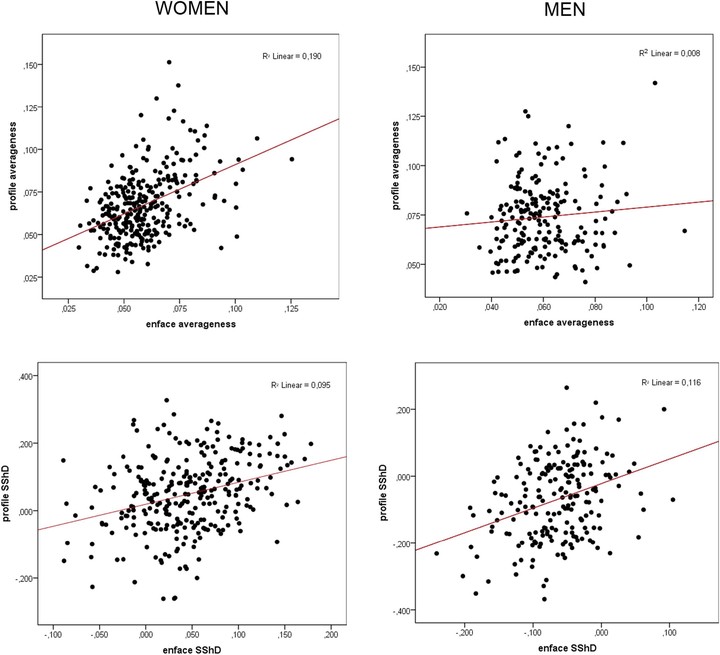A cross-cultural study of sex-typicality and averageness: Correlation between frontal and lateral measures of human faces

Abstract
Objectives: Facial averageness and sexual dimorphism are extensively studied attractiveness markers, which are viewed as possible indicators of biological quality. Both are complex morphological traits and both can be easily assessed from frontal and lateral projection of a human face. Interestingly, examination of mutual relations between the frontal and lateral dimensions of these markers has so far received little attention in published research. Methods: In our cross-cultural study, we used geometric morphometric data from male and female faces from Brazil, Cameroon, Colombia, and the Czech Republic, and analysed correlations between frontal and lateral measurements of averageness and degree of maleness/femaleness, i.e. individual variation in features that characterize sexual dimorphism. We also analysed whether the association between frontal and lateral measurements differs in men and women. Results: In general, our results showed a moderate correlation in sexually dimorphic features between lateral and frontal facial configuration in both sexes, while frontal and lateral facial averageness was moderately correlated only in women. This pattern was less consistent when individual populations were analysed separately. Conclusions: Referring to the multiple signalling theory, we propose that especially in women, lateral/frontal correlations support a hypothesis of redundancy of information provided by the frontal and lateral dimension of a given facial attractiveness marker. The absence of a significant correlation in male facial averageness suggests that frontal and lateral averageness may convey different information about an individual.